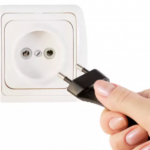Content
- 1 Wrong amount of material
- 2 Poor thread preparation
- 3 Wrong choice of sealing paste
- 4 Wrong flax winding
Sealing threaded connections with linen is one of the oldest methods used by plumbers. Despite more modern ways of working, flaxseed is still in demand. What errors are encountered when working with flax?

Wrong amount of material
Reliability depends on how much flax thread is in the threaded connection. Often, two opposing situations arise in plumbing: either there is too little material, or too much. Inexperienced craftsmen are sometimes difficult to track this.

If you wind too little thread, the connection will begin to leak. If there is a lot, then the connection details may burst or be also not tight enough. If the nut easily tightens the connection, it means that more flax needs to be added. It should always go into the thread with little effort.
Optimum thickness of the strand. Separated from the bay, should be in the range of 1 to 3 mm. It is also important to separate coarse fibers and litter from the base material.

Poor thread preparation
Flaxen thread cannot be wound on the thread as it is. It is necessary to prepare both the surface and the material itself. The thread must be cleaned of all kinds of contaminants, and its surface must be dry.
Also in combination with flax, special pastes are used to seal threaded joints. Their absence is a gross mistake that many inexperienced plumbers encounter. The paste is applied first on the cleaned thread, and then on the winding of flax. Its amount should also be optimal. Surplus after twisting is removed.

Wrong choice of sealing paste
There are two types of pastes: the former are used for water supply at low pressure, and the latter are used under high pressure. If the paste is improperly selected, the connections lose their tightness during operation.
Also, pastes vary in suitability for different temperatures. For example, some can be used up to +140 degrees, and others a maximum at +70 degrees. Pastes help protect flax from burnout and decomposition, and also prevent its oxidation and corrosion compounds.


Wrong flax winding
The flaxen strand should be evenly wound around the thread. When spinning, flax should not be unwound; it is wound clockwise on ordinary threads. The thread should fall into each thread, there should be no bulging or sunken parts.


-
 The combination of dark and light shades in the bathroom
The combination of dark and light shades in the bathroom
-
 Advantages and disadvantages of a bunk bed
Advantages and disadvantages of a bunk bed
-
 By hiring repair crews, you can get fooled
By hiring repair crews, you can get fooled
-
 How to make a rectangular cutout in ceramic tiles
How to make a rectangular cutout in ceramic tiles
-
 The most common mistakes when arranging a pond on a site
The most common mistakes when arranging a pond on a site
-
 What kind of people make mistakes when choosing the sizes of a shower cabin
What kind of people make mistakes when choosing the sizes of a shower cabin
-
 How to originally hide shoes in the hallway
How to originally hide shoes in the hallway
-
 Why does the socket not let in the plug of the appliance?
Why does the socket not let in the plug of the appliance?
-
 What difficulties can arise when combining tiles of different sizes
What difficulties can arise when combining tiles of different sizes
-
 Choosing a bed for a child
Choosing a bed for a child
-
 Top 5 Reasons Why Throwing Sawdust Out
Top 5 Reasons Why Throwing Sawdust Out
-
 The most common mistakes when installing a bathtub
The most common mistakes when installing a bathtub
New publications are published daily on our channel in Yandex. Zen
Go to Yandex. Zen


